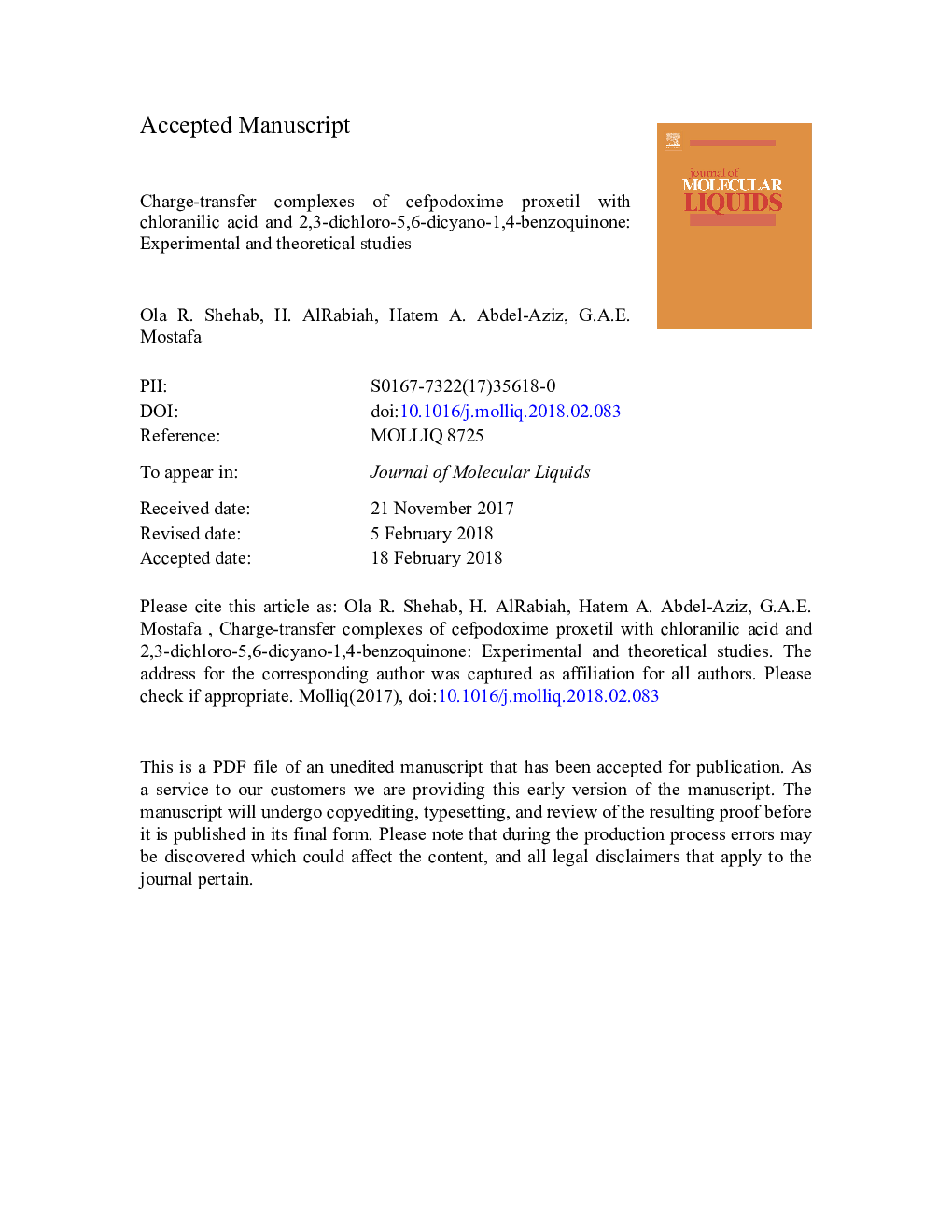| Article ID | Journal | Published Year | Pages | File Type |
|---|---|---|---|---|
| 7842673 | Journal of Molecular Liquids | 2018 | 44 Pages |
Abstract
Two new charge transfer complexes of cefpodoxime proxetil (CEP) as electron donor and chloranilic acid (CHA) or 2, 3-dichloro 5, 6-dicyano 1, 4-benzoquinone (DDQ) as acceptors have been synthesized and characterized by different physico-chemical techniques. These methods were introduced, for the first time, to study the stability of the expected structures of CEP complexes. The formation of charge transfer reaction between bioactive molecules and or organic molecules is important to understand bioactive molecule-receptor interactions. The solid complexes were synthesized and characterized by infrared spectra, NMR, and differential scanning colometry (DSC) which revealed that the existence of both charge transfer complex were formed between CEP and CHA or DDQ. Based on electronic spectra, Job's method has been used to study the stoichemistry of the formed product and determine the molecular composition of the charge transfer complex. It was found to be 1:1 (donor: acceptor). Different spectroscopic parameters (like: molar extension constant, dipole moment, formation constant molar) were determined to study the stability of the developed complexes. The found results are reasonable for assessment of CEP in pharmaceutical form. The practical study was complemented by Quantum chemical calculations (optimization, and MEP maps) at DFT/B3LYP level of theory.
Related Topics
Physical Sciences and Engineering
Chemistry
Physical and Theoretical Chemistry
Authors
Ola R. Shehab, Haitham AlRabiah, Hatem A. Abdel-Aziz, Gamal A.E. Mostafa,
